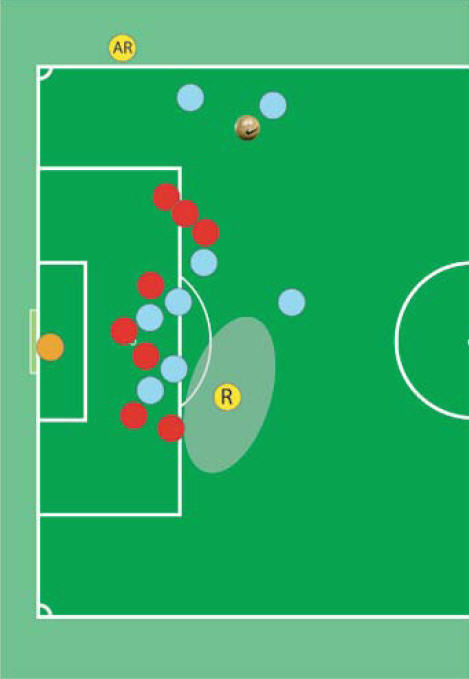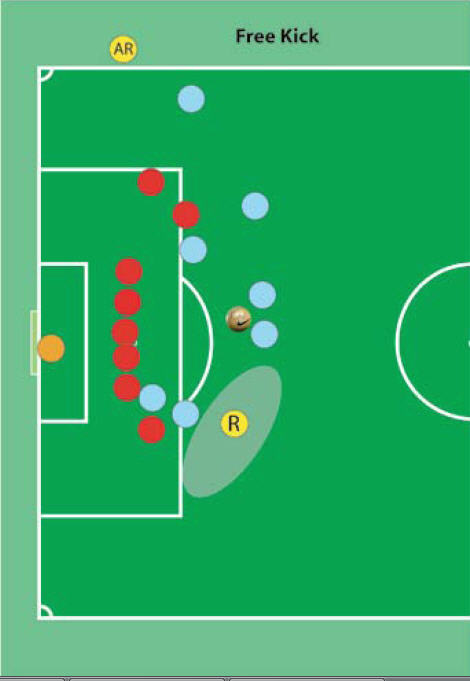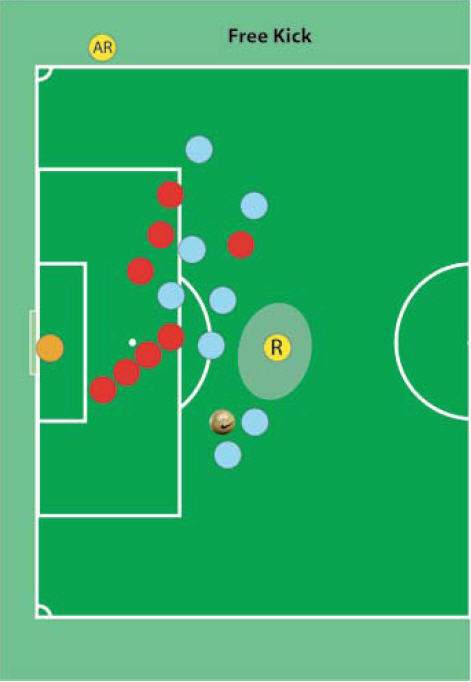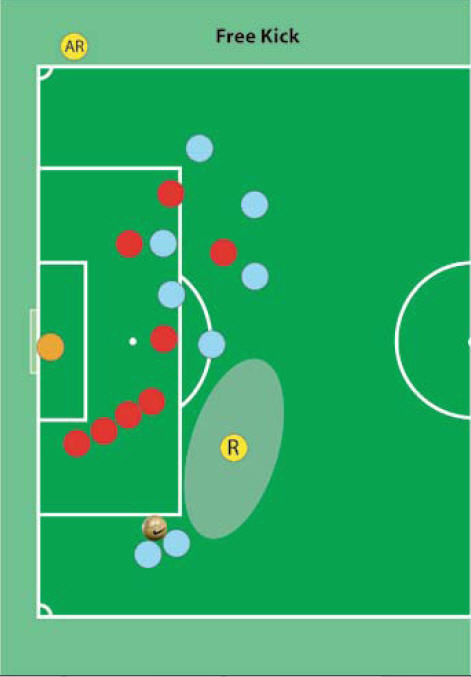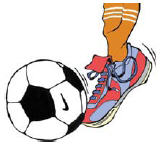
The ball is in play (able to be played by an attacker other than the kick or by an opponent) when it has been kicked and moved.
The distance to be moved is minimal and the "kick" need only be a touch of the ball with the foot in a kicking motion.
Simply tapping the
top of the ball with the foot or stepping on the ball are not sufficient
When the restart of play is based on the ball being kicked and moved,
the referee must ensure that the ball is indeed kicked (touched with the
foot in a kicking motion) and moved (caused to go from one place to
another).
Being "kicked" does not, for example, include an action in which the ball is dragged by continuous contact with the foot.
Being "moved" does not, for example, include the ball simply quivering, trembling, or shaking as a result of light contact.
The referee must make the final decision on what is and is not "kicked and moved" based on the spirit and flow of the match
Quick Free Kick
- Kicking team has the right to a quick restart if they wish to
use it
- Opponents must retire 10 yards
- Opponents have no right to form a wall
- As a referee, encourage the quick free kick
- Do not interfere unless:
- Kicking team insists on ten yards
- Encroachment is severe
- "Quick" restart is not taken
- Kicker starting prior to opponents retiring 10 yards is at risk of losing possession
- Hand signal, if indirect free kick
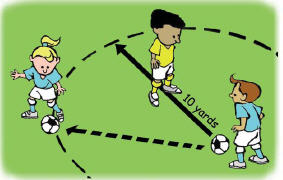

Quick Free Kick Guidelines
- Opponent retiring and kicker makes mistake and kicks ball to
opponent
- No offense - Kicker at risk
- Opponent retiring but deflects ball when kicked right at him/her
- Warn player - Retake kick if no goal results
- Opponent retiring but makes an effort to intercept the ball.
If player succeeds:
- Caution Player - retake kick
Ceremonial Free Kick
- Organized defensive wall
- Clearly show kicker to wait for whistle
- Be "first brick in the wall" - 10 yards
- Bring opponents to you
- Move to your next position
- Signal for restart
- When you are ready
- As soon as possible

